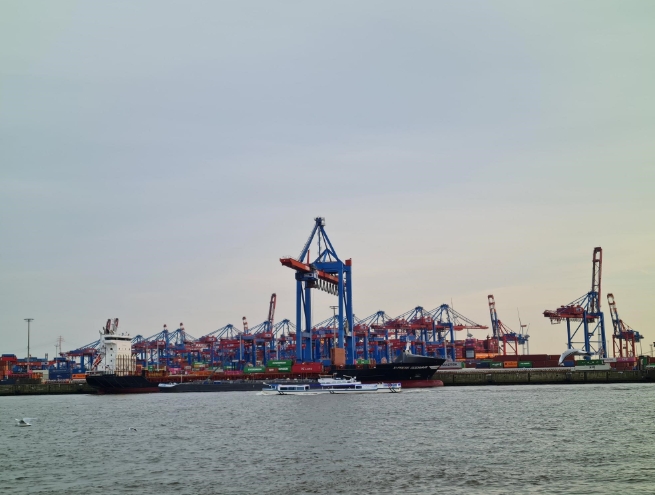
The pilot unfolded in two phases. In the first, Shanghai Qiyao Environmental Technology (SMDERI-QET) facilitated a ship-to-ship transfer of 25.44 metric tons of captured CO2 from the Panama-flagged MV Ever Top to the Dejin 26 vessel. The CO2 was then offloaded to a tank truck at a jetty in Zhoushan, Zhejiang Province. In the second phase, led by GCMD, the liquefied CO2 traveled 2,000 kilometers to a joint venture plant operated by Greenore and Baotou Steel in Inner Mongolia, where it was used to produce low-carbon calcium carbonate for sustainable construction materials.
The project involved collaboration with multiple stakeholders, including Evergreen Marine Corporation, Dejin Shipping, Shanghai Municipal Transportation Commission, Shanghai Maritime Safety Administration, Shanghai International Port Group, Shanghai Customs, and Shanghai Border Inspection. This cross-sector effort showcased the potential to repurpose captured CO2 for industrial use, linking maritime decarbonization with broader carbon management systems.
“This pilot marks a major step in demonstrating how onboard captured CO2 can be integrated into the broader circular economy,” said GCMD CEO Professor Lynn Loo. “With a rigorous life cycle assessment underway, we are quantifying the climate impact across the entire value chain to show how OCCS can serve as a meaningful decarbonization lever—when applied thoughtfully and transparently.”
Tracy Chen, Senior Vice President of Greenore, added: “By converting the LCO2 into high-purity, green calcium carbonate, we have helped complete the carbon value chain in this pilot. In the future, with the launch of Greenore’s coastal mineralisation projects, onboard captured LCO2 can be locally utilised and stored—enabling meaningful emissions abatement and supporting the maritime sector’s transition to net-zero.”
GCMD plans a lifecycle assessment with Norway’s DNV to validate emission reductions, using data from sampling activities. A key challenge addressed was reclassifying captured CO2 as “hazardous cargo” rather than “hazardous waste,” enabling its use as an industrial feedstock. GCMD’s May 2025 COLOSSUS study highlighted that using captured CO2 in concrete production can reduce greenhouse gas emissions by up to 60%, displacing carbon-intensive cement manufacturing.
The pilot underscores the need for downstream infrastructure to handle captured CO2, advancing maritime decarbonization while addressing practical challenges like classification and scalability for broader adoption.